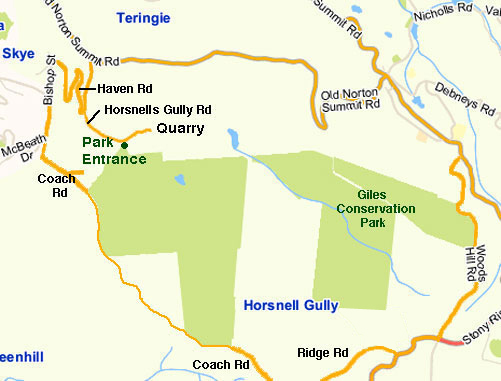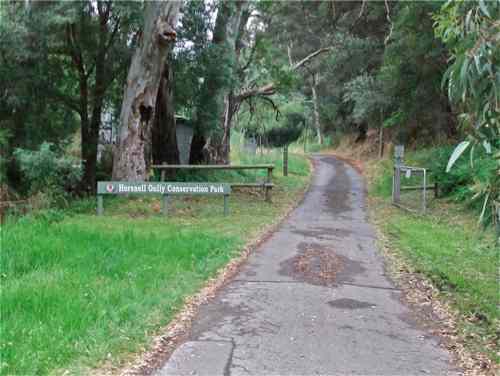|
HORSNELL GULLY
|
|||||
|
HORSNELL GULLY >
|
GILES | ||||
 Horsnell Gully is at first sight a bit of a conundrum. The Park separates into two distinct areas: a western area which is commonly known as ‘Horsnell Gully’, and an eastern region usually referred to as Giles Conservation Park. The eastern section was added to the original western section in 1985. There are good walks in both sections. The western section is best approached via Horsnells Gully Road, but beware of frequent Quarry trucks. The Park entrance is just before the Quarry gates, and a narrow car track leads to a small parking area. This is the low point of this section of the Park!
Coach Rd extends as a fire track along the boundary of the park, and in fact leads through via Ridge Rd to Woods Hill Road. One can enter this section of the Park from the extension of Coach Rd. Giles Conservation Park is best entered from Woods Hill Rd or the extension of Coach Rd. Some history ... And just who were Horsnell and Giles? The area including Horsnell Gully Conservation Park was settled in 1842 by John Horsnell, the State Governor’s coachman. The homestead adjacent to the car park was established in 1860, followed by a large garden and orchard. The two stone buildings next to the car park were coaching sheds, and the ruin south east of these was a stable and cowshed with pigsty attached, built in 1899. In the Giles section of the Horsnell Gully Conservation Park stand the ruins of three stone cottages. In the 1850s they were called ‘Hope, Faith and Charity’ and were home to the three gardeners and their families who tended acres of English gardens set up along the valley floor by one of the first settlers in the area, horticulturalist, Charles Giles. |
|||||
|
HORSNELL GULLY >
|
|
GILES | |||
